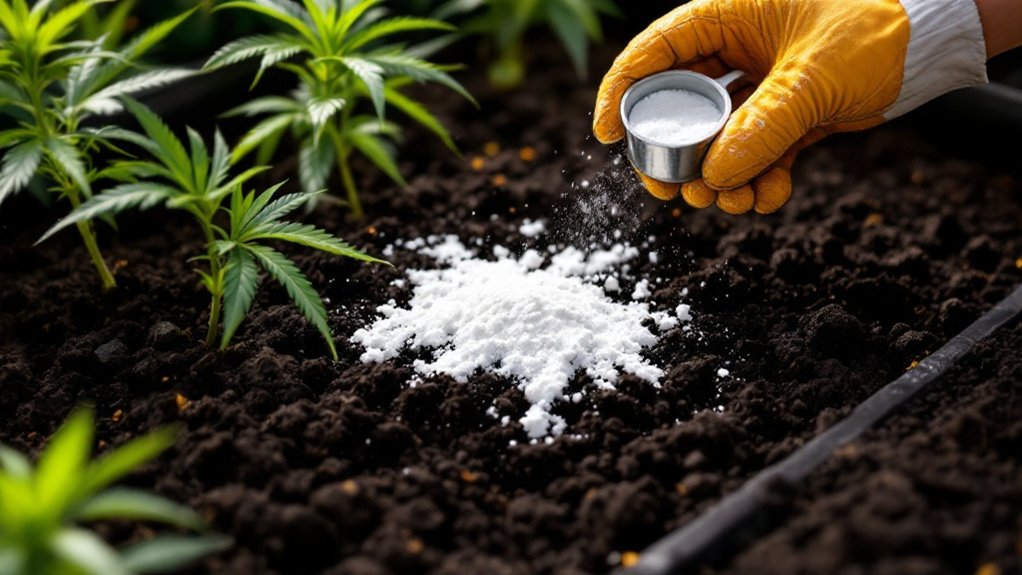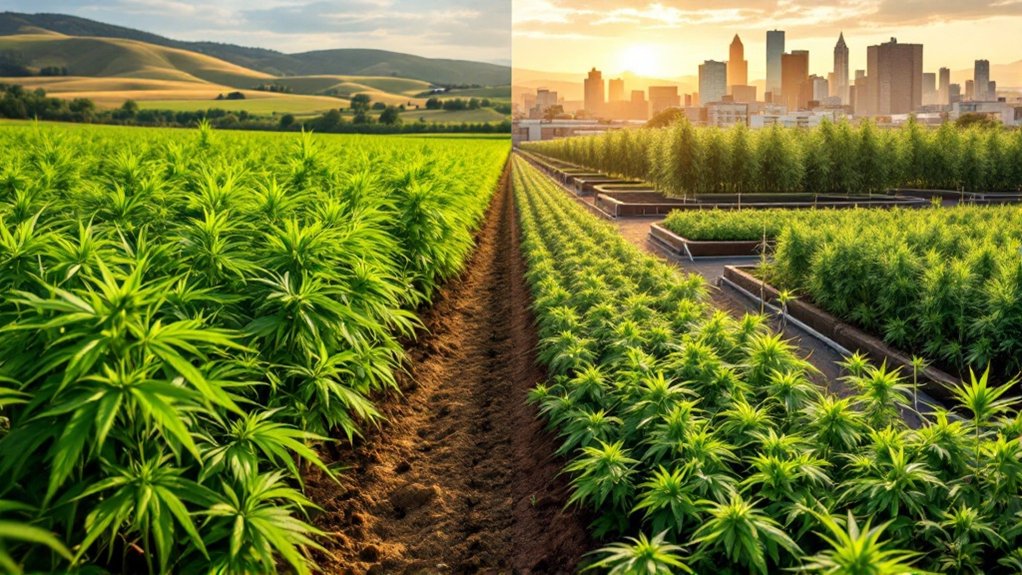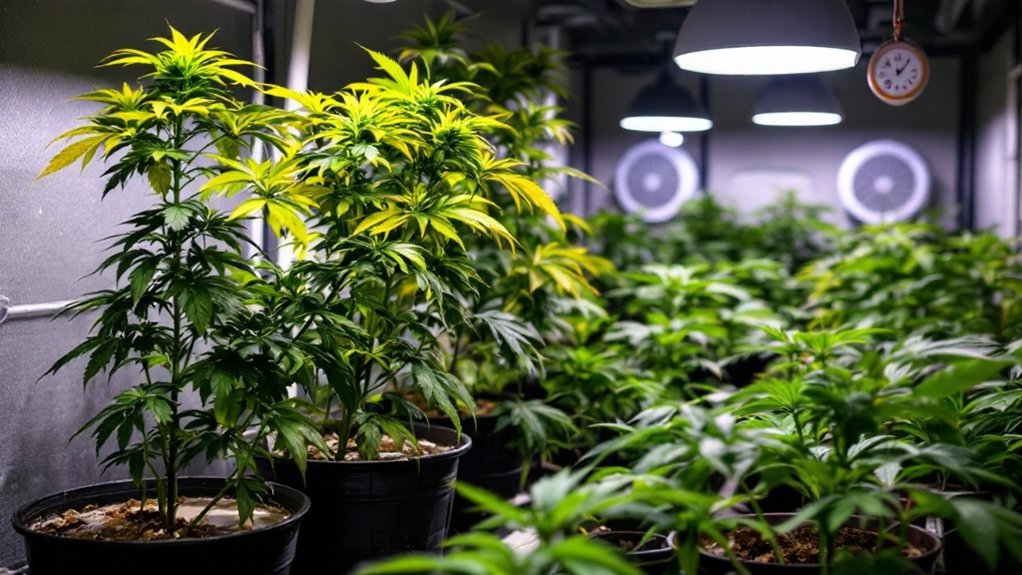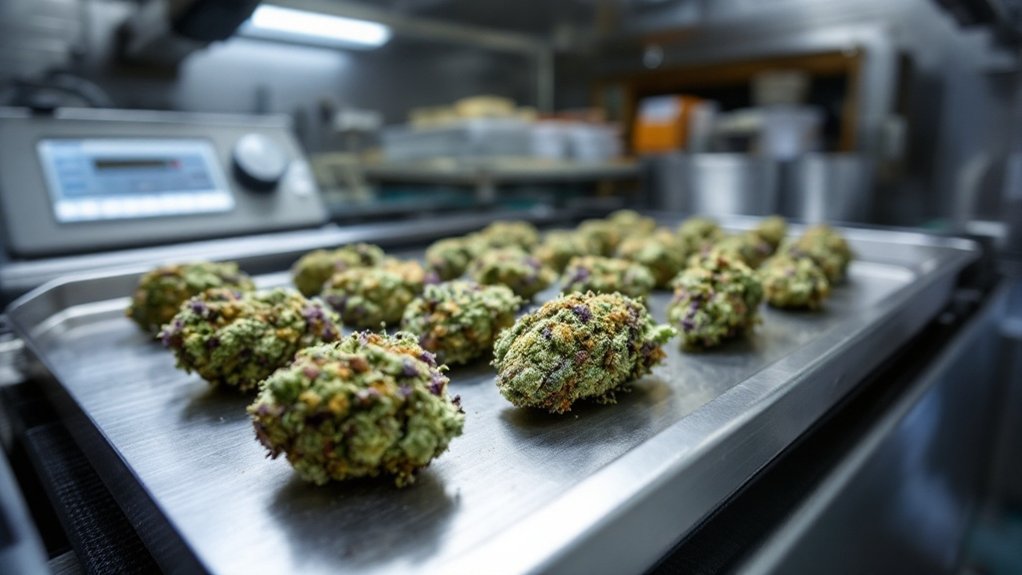Cannabis grows best in soil with a pH between 6.0 and 7.0. To increase acidic soil pH, growers can incorporate amendments like dolomite lime, agricultural lime, potassium carbonate, or wood ash. These materials should be thoroughly mixed into the soil several weeks before planting and watered in properly. Digital pH meters or chemical test kits help monitor progress, ensuring adjustments are made incrementally to prevent shocking plants. Proper water management with pH-adjusted irrigation further stabilizes the growing environment.
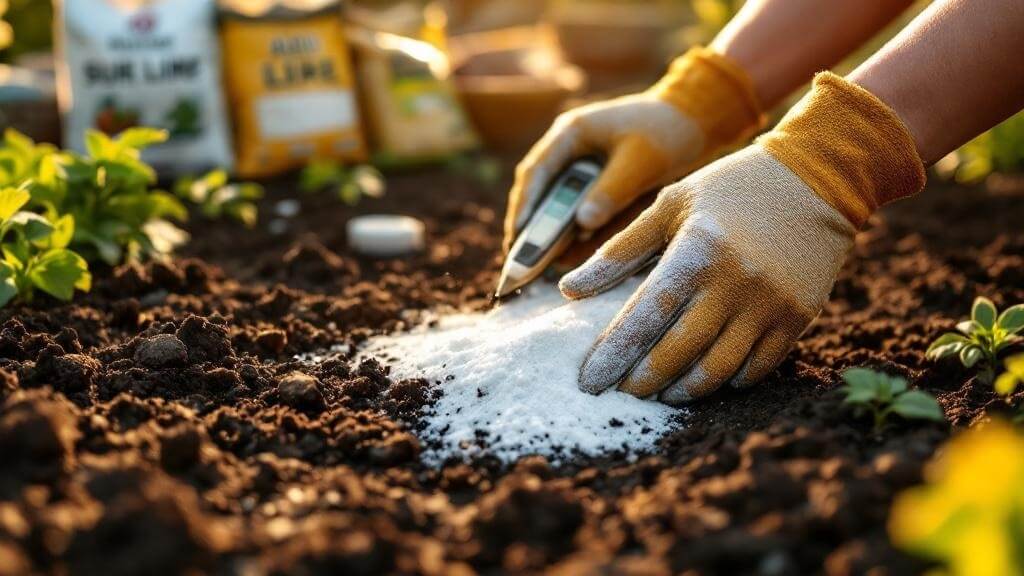
While cannabis cultivation success depends on numerous factors, maintaining the proper soil pH stands as one of the most critical yet often overlooked aspects of growing healthy plants. The ideal pH range for cannabis in soil falls between 6.0 and 7.0, directly affecting nutrient availability and overall plant health. When soil becomes too acidic (low pH), cannabis plants cannot properly absorb essential nutrients, leading to deficiencies despite adequate fertilization.
Accurate testing forms the foundation of effective pH management. Digital pH meters offer the most precise measurements, though chemical testing kits provide suitable alternatives for home growers. To test soil pH, creating a soil-water suspension allows for more consistent readings. Growers should sample multiple locations within their growing area, as pH can vary considerably across even small spaces.
Several common amendments effectively raise soil pH to ideal levels. Dolomite lime (calcium magnesium carbonate) stands as the most widely used option, simultaneously increasing pH while supplying calcium and magnesium. Agricultural lime (calcium carbonate) provides another reliable choice for creating more alkaline conditions. For fast-acting pH correction, potassium carbonate can be applied through irrigation systems to quickly raise soil pH. For organic cultivators, wood ash offers a gentle natural alternative, though it should only come from untreated wood sources.
Application timing and technique considerably impact amendment effectiveness. Thorough mixing ensures even distribution throughout the growing medium, while proper watering helps activate the materials. Most pH adjustments should occur several weeks before planting to allow sufficient reaction time. The process requires patience—growers should avoid overapplication, which risks creating excessively alkaline conditions that cause different nutrient issues. Making small, incremental adjustments helps prevent shocking the plants while gradually achieving the desired pH level.
Water management complements soil amendment strategies in raising pH. Adjusting irrigation water to 6.5-7.0 pH helps maintain desired soil conditions over time. Monitoring runoff pH provides valuable feedback about amendment effectiveness and indicates when additional adjustments become necessary. Buffering agents in quality nutrient solutions can help stabilize pH levels throughout the growing cycle.
Properly balanced soil pH delivers substantial benefits for cannabis cultivation. Plants demonstrate stronger growth, increased resistance to pathogens, and improved nutrient uptake efficiency.
Perhaps most importantly, maintaining ideal pH prevents nutrient lockout situations where plants starve despite abundant nutrients in the soil. The result manifests in healthier plants with enhanced cannabinoid and terpene production—ultimately yielding higher quality harvests with improved potency and flavor profiles.
Frequently Asked Questions
Can I Use Vinegar to Lower Soil Ph for Cannabis?
Vinegar can be used to lower soil pH for cannabis cultivation, though its effects are temporary.
When applied in diluted form, the acetic acid in vinegar neutralizes alkaline components in the soil, creating more acidic conditions.
For cannabis plants that prefer soil pH between 6.0-7.0, small amounts of vinegar added to irrigation water can make minor pH adjustments.
Regular monitoring with a pH meter is essential, as excessive application may harm plants and beneficial soil microorganisms.
How Quickly Do Lime Applications Change Soil Ph?
Lime applications begin to change soil pH within the first 4.5 months after application, with noticeable increases occurring within weeks.
Full pH adjustment, however, typically requires two to three years to complete. Several factors influence the speed of this process, including soil texture, moisture levels, lime particle size, and application rate.
Sandy soils adjust more quickly than clay soils, while finely ground lime reacts faster than coarse particles. Proper incorporation through tillage also accelerates pH changes.
Will Epsom Salt Affect My Cannabis Soil Ph?
Epsom salt (magnesium sulfate) has minimal impact on cannabis soil pH when used at recommended rates. It primarily functions as a supplement providing magnesium and sulfur rather than as a pH adjuster.
The sulfur component could potentially lower pH slightly if applied excessively. For ideal nutrient absorption, cannabis growers should maintain soil pH between 6.0-7.0, monitoring regularly after any Epsom salt applications.
In hydroponic systems, pH should be kept between 5.5-6.5 for proper nutrient uptake.
Does Outdoor Rain Impact Adjusted Soil Ph Levels?
Outdoor rain greatly impacts adjusted soil pH levels in cannabis cultivation.
Rainfall, especially acidic precipitation with pH as low as 4.0, can gradually neutralize or lower carefully balanced growing medium pH. The effect varies based on rain volume, frequency, and initial soil composition.
Heavy rainfall leaches alkaline minerals from soil, potentially causing pH to drift below the ideal 6.0-7.0 range for cannabis, which restricts access to critical nutrients like calcium, magnesium, and phosphorus.
Are Organic Ph Adjusters Better Than Synthetic Ones?
Organic pH adjusters provide significant long-term benefits for soil ecosystems despite their slower action compared to synthetic alternatives.
They enhance soil structure, support beneficial microorganisms, and contribute additional organic matter that improves water retention and fertility.
Synthetic adjusters offer precision and immediate results, making them valuable for time-sensitive situations.
The ideal choice depends on specific growing priorities: sustainability and soil health favor organic options, while rapid correction and precise control favor synthetic products.
